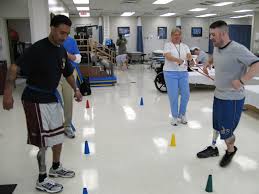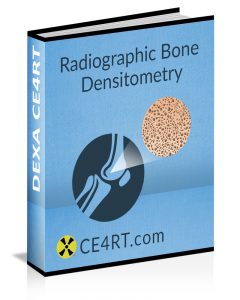Treatment of Osteoporosis in Old Age

Many older individuals are diagnosed with osteoporosis based on the WHO criteria or prior fragility fractures. It is the healthcare provider’s responsibility to institute appropriate treatment of osteoporosis in older patients. In particular, patients with low bone mass and multiple risk factors for fractures should be considered for specific treatment of osteoporosis in old age. This is in addition to maximizing nutrition and emphasizing lifestyle modifications.
Pharmacotherapy for Osteoporosis
There are several drugs that have received FDA approval for the treatment of osteoporosis in old age. These include bisphosphonates, estrogen, SERMs, calcitonin, and anabolic agents (teriparatide). Healthcare professionals should tailor each patient’s therapy based on the severity of bone loss and the presence of comorbid conditions. In addition, older adults with osteoporosis should be assessed for fall risk. Fall prevention strategies should be discussed with patients and caregivers. In frail elderly patients who are at high risk of falls, hip protectors should be considered to prevent fractures and limit the damage from a fall, should it occur.
Combined Therapy for Osteoporosis
Studies suggest that the efficacy of combination therapy in increasing BMD is modestly greater than individual agents used alone. It should be noted however that no data is available to indicate that combination treatment of osteoporosis in old age is efficacious in reducing fracture risk. Moreover, it has been found that combination bisphosphonate and teriparatide treatment has no additional benefit compared to either agent alone.
BMD Testing While on Treatment of Osteoporosis in Old Age
Similar to younger adults, older patients on treatment of osteoporosis in old age should be monitored with periodic BMD testing. However, healthcare providers should remember that, in general, bone density measurement should be repeated only if the results could potentially alter the patient’s treatment plan. Older adults with a normal or slightly low BMD should not undergo testing at an interval less than 3-5 years. The exception is individuals with suspected accelerated bone loss and possible need for pharmacotherapy. Again, similar to younger adults, older adults on antiresorptive therapy usually benefit from DXA scanning at an interval of roughly 18-24 months following the initial diagnostic scan.
Monitoring of Bone Markers During Osteoporosis Treatment
In both younger and older adults, the usefulness of markers of bone resorption as a method of monitoring response to treatment is not clearly established. One approach used by clinicians is to measure markers in patients who are seemingly unresponsive to antiresorptive therapy. But again, this is not a validated method during treatment of osteoporosis in old age. Further research is needed to determine whether markers of bone turnover are truly useful for clinical monitoring of patients.
Use of Other Medications During Osteoporosis Treatment
Healthcare providers should carefully evaluate each elderly patient’s current medication list, including drugs prescribed for non-bone indications. This is especially important during treatment of osteoporosis in old age. Of particular importance are medications with side effects such as low blood pressure, orthostasis, dizziness, and sedation as they can increase a person’s risk of falling. In elderly adults with low bone density, such medications should be avoided or their use minimized to the least effective dose. Finally, alcohol consumption in older adults should be reviewed as this too can lead to unsteadiness, falls, and fractures.
Fracture Follow-Up in Older Adults
In older adults, fractures can be associated with considerable morbidity and mortality. Moreover, elderly individuals are susceptible to subsequent fractures in the future. Therefore, healthcare professionals need to take an aggressive approach to fracture follow-up in this age group to limit morbidity and mortality and prevent future fractures. This is an important component of treatment of osteoporosis in old age. The key components of fracture follow-up in older adults consist of strongly encouraging lifestyle modifications, optimizing nutrition, instituting specific therapy for osteoporosis, and beginning appropriate rehabilitation.
Healthcare providers have a remarkable opportunity to dramatically limit the consequences of osteoporosis by identifying patients with the disease and intervening in a timely manner. Unfortunately, a significant number of patients with osteoporotic fractures do not receive the long-term care necessary to improve their bone health and prevent future fractures. Therefore, it is the responsibility of healthcare providers caring for fracture patients to not only treat the acute fracture but also aggressively implement post-fracture measures, both therapeutic and rehabilitative, to prevent the occurrence of more fractures in the future.
Referral to Specialists for Older Adults
As is the case with younger patients, diagnosis and treatment of osteoporosis in old age is typically in the primary care setting. Similar to young adults, elderly individuals with challenging clinical presentations can also benefit from referral to physicians who are specialists in the management of osteoporosis (usually rheumatologists and endocrinologists). Candidates for specialist consultation include patients with suspected secondary causes of osteoporosis, patients who are intolerant or unresponsive to therapy, patients with declining bone density despite therapy, and patients who sustain a fragility fracture while on treatment.
Role of PT/OT and Other Specialists
Physical and occupational therapists play a vital role in the management and treatment of osteoporosis in old age. They help patients improve strength and balance and reduce the risk of falling. A PT/OT referral should be strongly considered in all elderly patients with osteoporosis who are at risk of falls and/or have a limited ability to exercise.
Older adults may also benefit from referral to optometrists and ophthalmologists to ensure appropriate treatment of refraction errors, cataracts, and glaucoma. Maximizing visual acuity in this vulnerable age group is one way of minimizing fall risk. Finally, elderly patients with spine fractures and chronic pain may benefit from specialist referral to an orthopedist or rehabilitation physician who can assess the need for devices such as braces to reduce discomfort and prevent kyphosis.
Maximizing Compliance in Older Adults
During the treatment of osteoporosis in old age, both long-term adherence and persistence are critical. Adherence is defined as the percentage of medication taken as prescribed. Persistence is defined as the percentage of patients who take the medication for the recommended period of time. Studies have shown that rates for both adherence and persistence are suboptimal at about 50 percent. Moreover, it is not clear which strategies to improve long-term compliance are effective.
Some approaches to improve compliance with osteoporosis therapy include providing patients with the results of repeat BMD testing or biochemical markers as feedback that the therapy is working. In fact, a study showed that monitoring by a healthcare provider such as a nurse is equally effective in improving compliance with therapy as is the measurement of bone markers. This would suggest that the key to maximizing compliance is regular follow-up with a healthcare provider to ensure that osteoporosis therapy is being taken appropriately.
Counseling for Older Individuals
Certain strategies are effective in improving adherence to medical regimens in general. These can be applied to the treatment of osteoporosis in old age as well. One approach is to counsel patients about the necessity and importance of the planned therapy. In addition, patients can be advised to enlist the support of their social network. Simplified treatment regimens and reminders about follow-up appointments also improve adherence and persistence.
Recognizing a patient’s efforts to adhere to therapy and addressing concerns about side effects are beneficial in improving compliance. It is noteworthy that many of these strategies are time-consuming, and therefore, non-physician healthcare providers play an invaluable role in implementing these approaches in the setting of a busy medical practice. The National Resource Center on Osteoporosis and Related Bone Diseases at the National Institutes of Health offers many patient education materials on osteoporosis online for free, and healthcare providers can guide their patients to these resources.
X-ray CE Online
We offer a range of online courses for radiologic technologists to complete their ARRT® requirements. You can purchase our e-course and test on Radiographic Bone Densitometry. This is worth 23 Credits. Our course Radiography of the Foot is worth 1 credit. Together, these two courses will complete the required 24 credits per biennium by the ARRT®.
Visit here to know more about arrt® ce credits online
